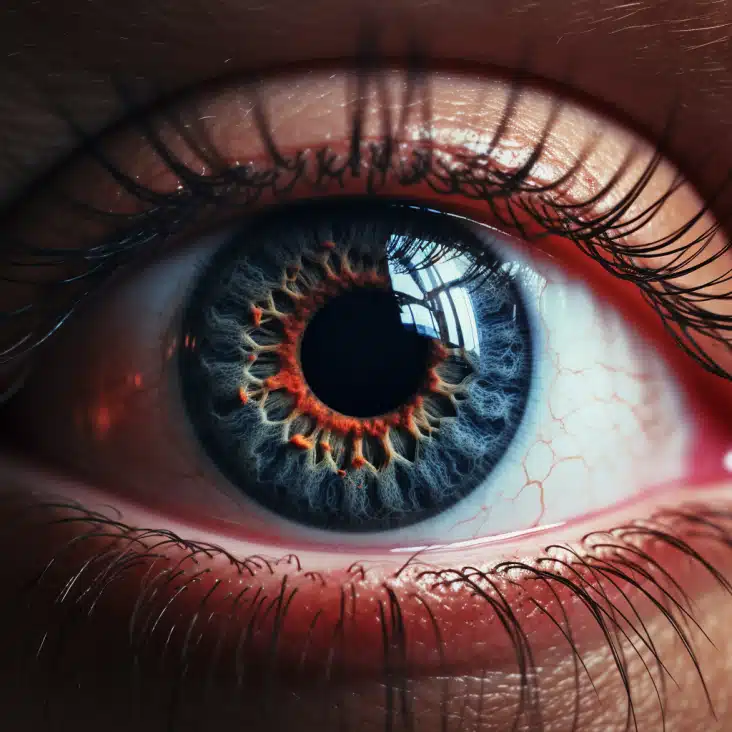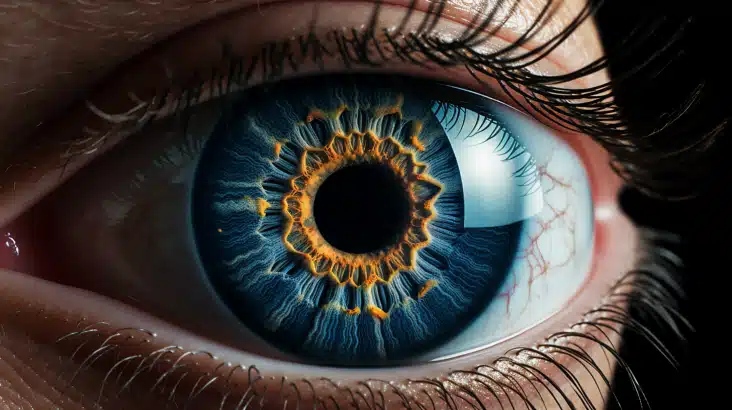Electroretinography, a non-invasive retinal scanning technique, shows some promise for detecting suicidal behaviors based on changes in retinal cell signals.
However, large scale studies are needed to determine its reliability.
Key Facts:
- Electroretinography (ERG) measures electrical signals from retinal cells in response to light flashes to assess retinal health.
- ERG wave changes have been linked to mental illnesses like depression and suicidal behaviors.
- Reviewed studies show mixed ERG changes related to suicide attempts, including altered a-wave latency and reduced b-wave amplitude.
- Small sample sizes, varying methodologies, and potential confounds like hypoxia limit the strength of conclusions so far.
Source: BMC Psychiatry (2023)
Retinal Structure & Electroretinography
The retina contains specialized neurons that detect light (photoreceptors) and process visual signals before sending them via the optic nerve to the brain.
Different groups of retinal cells generate distinct components of the electroretinogram (ERG) signal when stimulated by brief light flashes:
- Rod and cone photoreceptors generate negative “a-waves” when they hyperpolarize in response to light.
- Depolarizing bipolar and glial cells produce positive “b-waves” after the photoreceptor a-waves.
- Inner retinal neurons generate faster “oscillatory potentials” riding atop the b-waves.
ERG measures the timing and size of these signals, reflecting retinal circuit function.
Changes in ERG components can indicate dysfunction in specific retinal cell populations.
As retinal cells utilize neurotransmitters also active in the brain, ERG alterations may correlate with certain brain abnormalities.
The International Society for Clinical Electrophysiology of Vision (ISCEV) provides standard ERG testing protocols for clinical assessments of retinal disease.
An extended photopic flash protocol is often used in psychiatric ERG research, measuring on-and-off retinal responses to moderately bright flashes.
Apart from wave amplitudes and implicit times, parameters like oscillatory potential perturbation and the b-wave to a-wave ratio help characterize retinal signal propagation in psychiatric conditions.
Studies Linking ERG Changes and Suicidal Behaviors
A recent review of the medical literature identified 14 studies published over the past four decades examining full-field flash ERG findings in people exhibiting suicidal behaviors.
Most were individual case reports, with only one small case series and cross-sectional analysis.
Participants showed a variety of ERG waveform anomalies that may relate to suicidal acts or associated psychiatric illnesses.
Study Designs & Participants
The 14 studies included a total of 19 participants aged 19-59 years who had attempted suicide using various chemical agents or carbon monoxide poisoning.
Most were female. Around half were tested within days after the attempts, while the rest were assessed months later.
A minority had diagnosed psychiatric conditions like bipolar or depressive disorders. Their ERG recordings were compared to standard norms.
What were the observed ERG changes?

Reviewed studies found the following retinal response trends associated with recent or past suicide attempts:
Photoreceptor a-waves: Implicit time and amplitude remained relatively normal. Latency from flash onset was shorter than typical.
Bipolar cell b-waves: Reduced peak amplitude but prolonged implicit time and latency. These indicate slower signal transmission.
Oscillatory potentials: Lower amplitude oscillatory potentials suggest impaired signal modulation by amacrine and glial cells.
b-wave to a-wave ratio: Diminished ratios point to depressed inner retinal signaling relative to photoreceptor responses.
The authors concluded that suicide attempts or underlying factors appear to selectively disturb inner retinal layers that process signals downstream of the photoreceptors.
They hypothesized neurotransmitter imbalances may play a role but more research is needed to investigate the possible mechanisms.
Limitations of the Review of ERG & Suicide Risk
While these initial results are intriguing, the reviewed studies had several limitations hampering the strength and interpretation of their conclusions:
- As case reports or series with just 1-6 patients, findings may not be reproducible in larger populations.
- Participant heterogeneity, varying methodologies, and potential confounding factors between studies makes consolidating results difficult.
- Effects of suicide attempt methods involving hypoxia (like hanging or methanol poisoning) may partly explain retinal abnormalities.
- Longitudinal studies tracking changes over time are lacking.
- Specific relationships between retinal neurotransmitter changes and brain region activities are unknown.
The authors highlighted several avenues for more definitive future research:
Tighter Methodology
Studies should adhere to standardized ISCEV protocols for ERG testing and analysis.
Participant characteristics like age and gender should also be carefully controlled.
Larger Sample Sizes
Large scale studies are critical for achieving statistical significance of smaller ERG effects.
Multi-site collaborations could enable recruiting enough suicide attempters or ideators.
Exclusion of Potential Confounding Factors
Individuals undergoing attempts involving gas poisoning or hanging should potentially be excluded given hypoxia effects on retinal electrophysiology.
Those taking medications substantially altering retinal signals may also need to be avoided.
Longitudinal Assessments
Repeated ERG measures could help differentiate persistent effects of suicidal behavior from temporary retinal impacts of suicide attempt methods.
Studies capturing before and after changes may better establish causative relationships.
Establishing Neurotransmitter & Brain Correlations
Understanding links between specific retinal neurotransmitter activity changes and neuronal pathway alterations in key brain regions would provide greater mechanistic insight and biomarker specificity regarding suicidal ideations.
Multi-modal imaging studies incorporating EEGs or advanced MRI are warranted.
Takeaways: ERG as a Biomarker for Suicide Risk
While initial ERG findings in people attempting suicide require replication and further clarification, they suggest retinal electrical measures could eventually aid mental health professionals in assessing suicidal risk, especially with refinement and standardization.
However, considerable research across broader populations must first characterize consistency across groups and determine reliable discriminating ERG indicators of imminent suicidal thoughts versus behavior.
With advanced analysis methods and big data accumulation, ERG screening may someday provide clinicians with an objective supplementary tool for detecting suicidality.
Still this technology needs significantly more research before it can be used in real-world settings.
References
- Study: Electroretinography and suicidal behaviors: a systematic review
- Authors: Mark Mohan Kaggwa et al. (2023)







